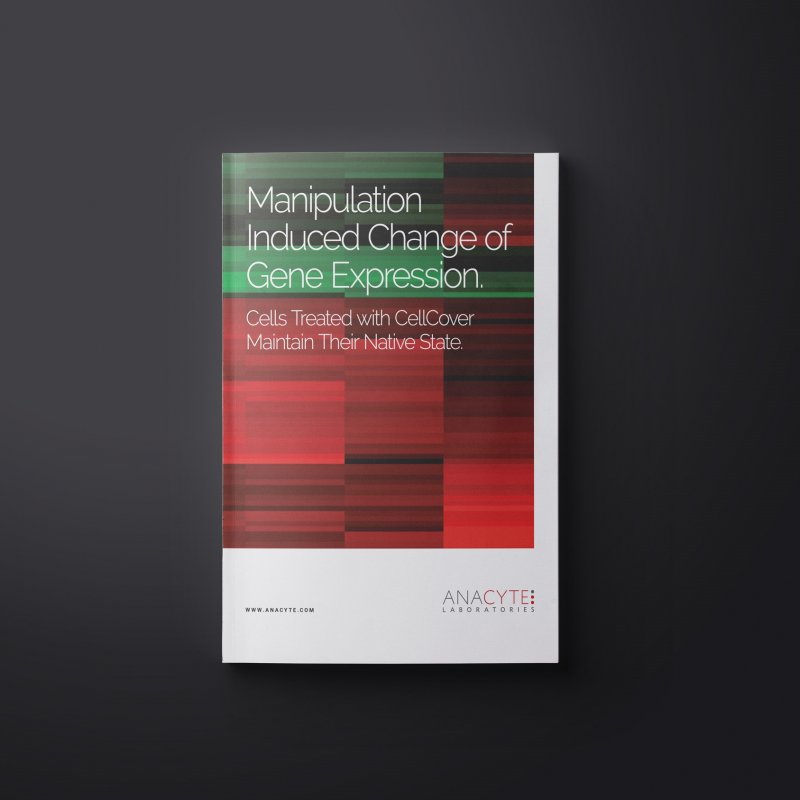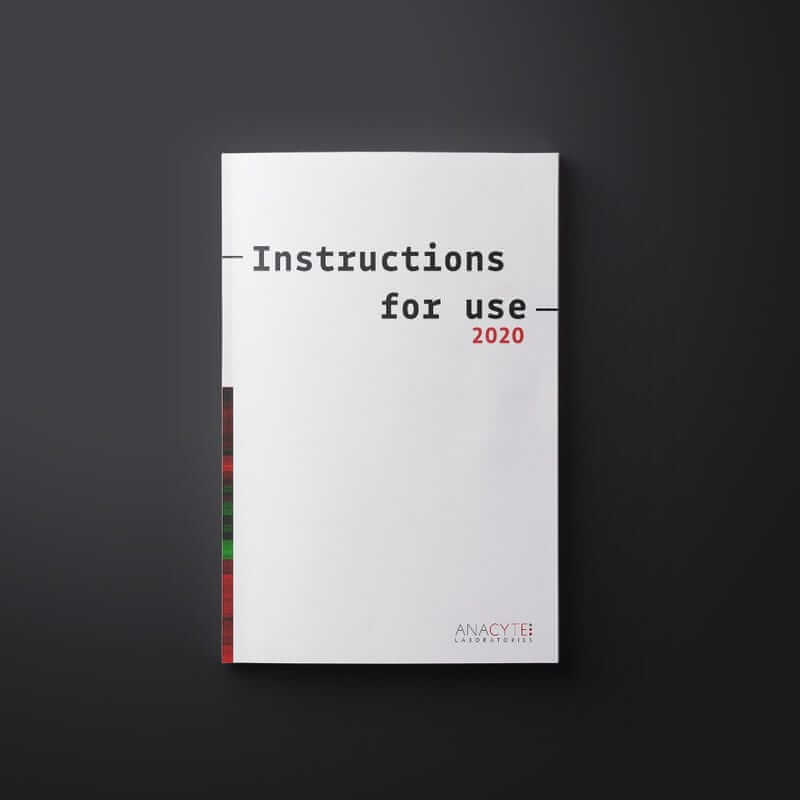Avoid Manipulation Induced Change of Gene Expression.
Optimize Your Protocols Using CellCover!
Below an Example of CellCover Fixation followed by Trypsinization.
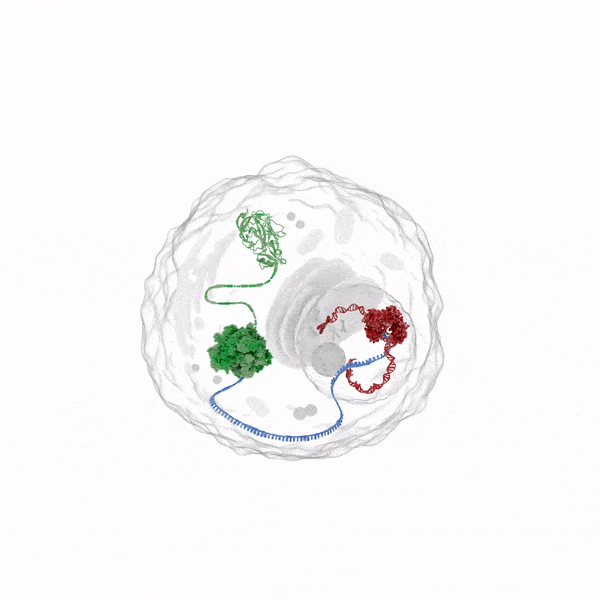
Cells Treated with CellCover Maintain Their Native State.
As soon as cells experience changes in their environment, they adapt signal transduction and gene expression to it. Thus, upon temperature change and/or cell culture medium removal and trypsinization for cell dissociation, cells adapt their transcriptome and proteome very rapidly.
Keeping the true cell. The rapid fixation of RNA and proteins is very important for expression patterns to remain unchanged. Such rapid fixation is often at the expense of other factors such as molecule crosslinking by PFA or cell lysis by high-salt reagents that stabilize or shield RNA. Not so with CellCover, which instantly fixes and stabilizes cells in their true state of RNA and protein expression, preventing lysis of cells during cell dissociation. and
.
High RIN values maintained.
Have you ever fixed your cells directly in their culture flask and then performed trypsinization for further experiments?
Probably not. But with CellCover you can, saving materials, time, and money.
Most importantly, with CellCover fixation followed by trypsinization, excellent sample quality is maintained, keeping cells close to in vivo morphology with no time given for changes in the sample to occur.
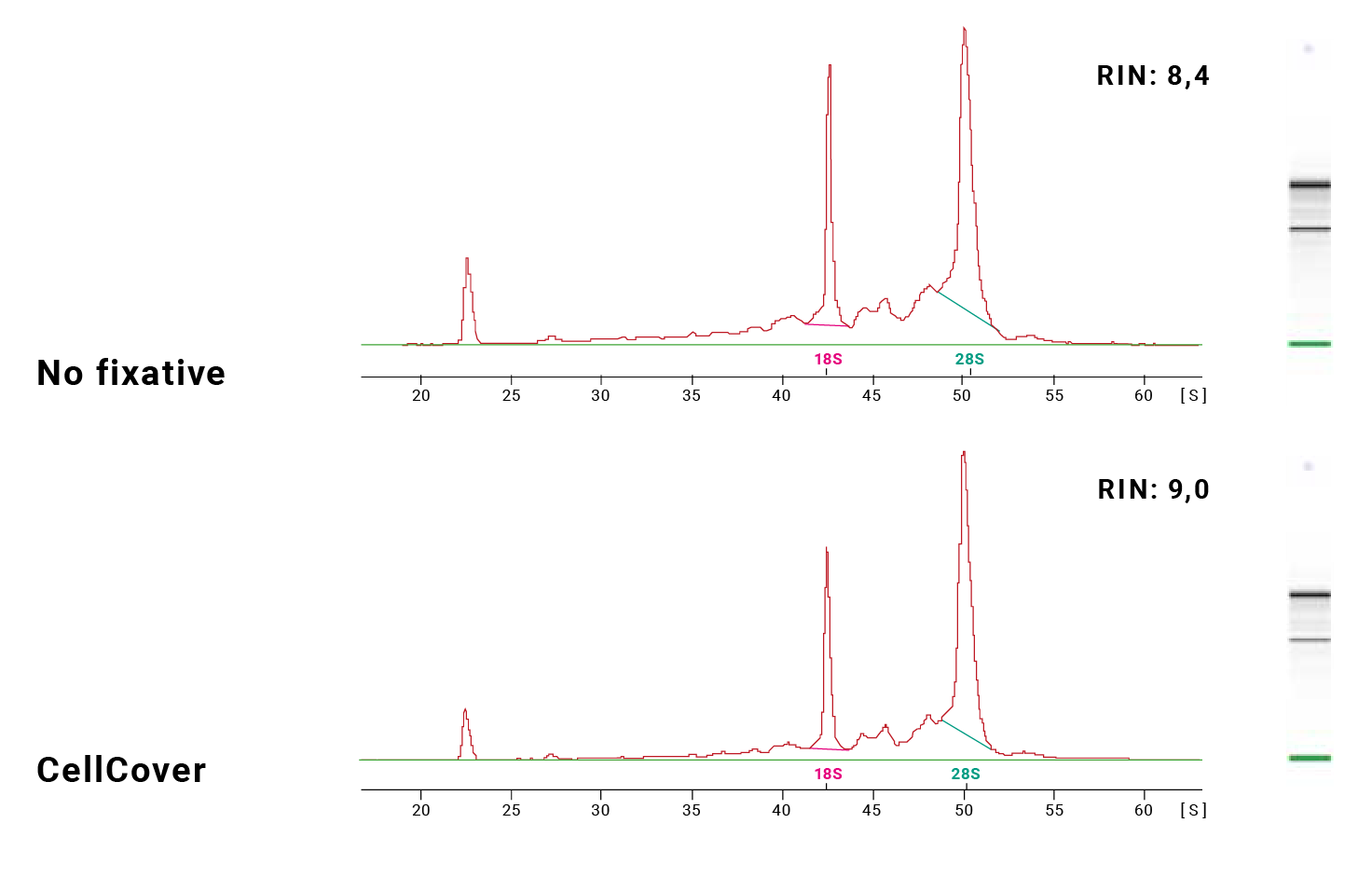
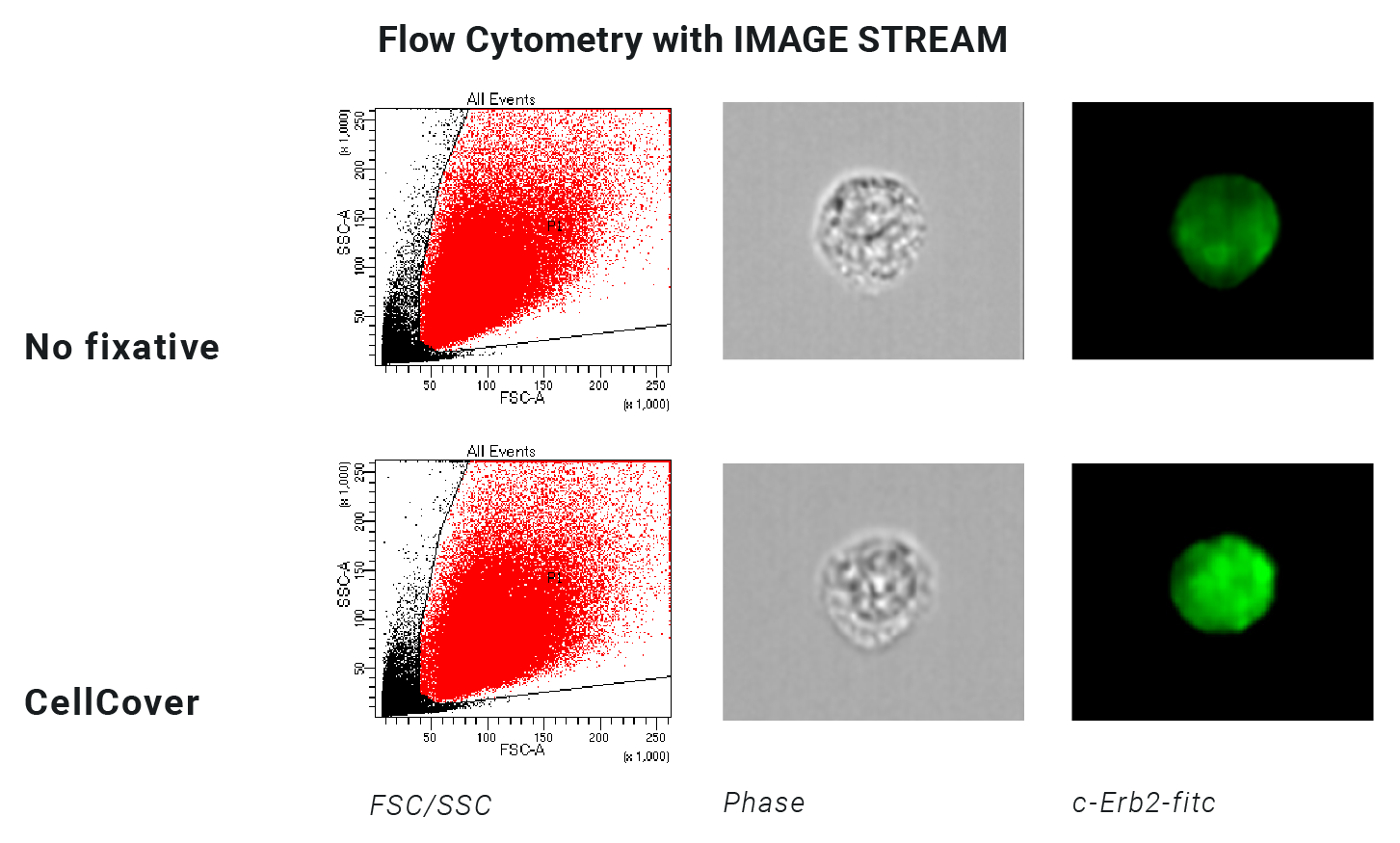
There is even more to it.
Not only is perfectly fixed RNA retained after exposure to the trypsin enzyme, but typical cellular morphology is also maintained and antigens are readily accessible for a wide variety of applications (immunohistochemistry, immunocytochemistry, immunolabeling, FISH, etc.).
Special Protocol 1
Use CellCover prior to a protocol for cell dissociation (trypsinization protocol using trypsin EDTA) for effective cell fixation with no lysis of cells (including for single cell suspension).
Special protocol for adherent cultured cells (same protocol for single suspension):
- Remove cell culture media
- Add appropriate volume of CellCover and incubate for 2-3 min at room temperature
- Remove CellCover
- Add trypsin solution (e.g. Trypsin/EDTA 0,25% for adherent cells) and incubate for 5 min at 37°C (or until single cells detached)
- Collect cells by centrifugation
- Resuspend cells in CellCover and store at 4°C until needed or proceed with your (downstream) application(s)
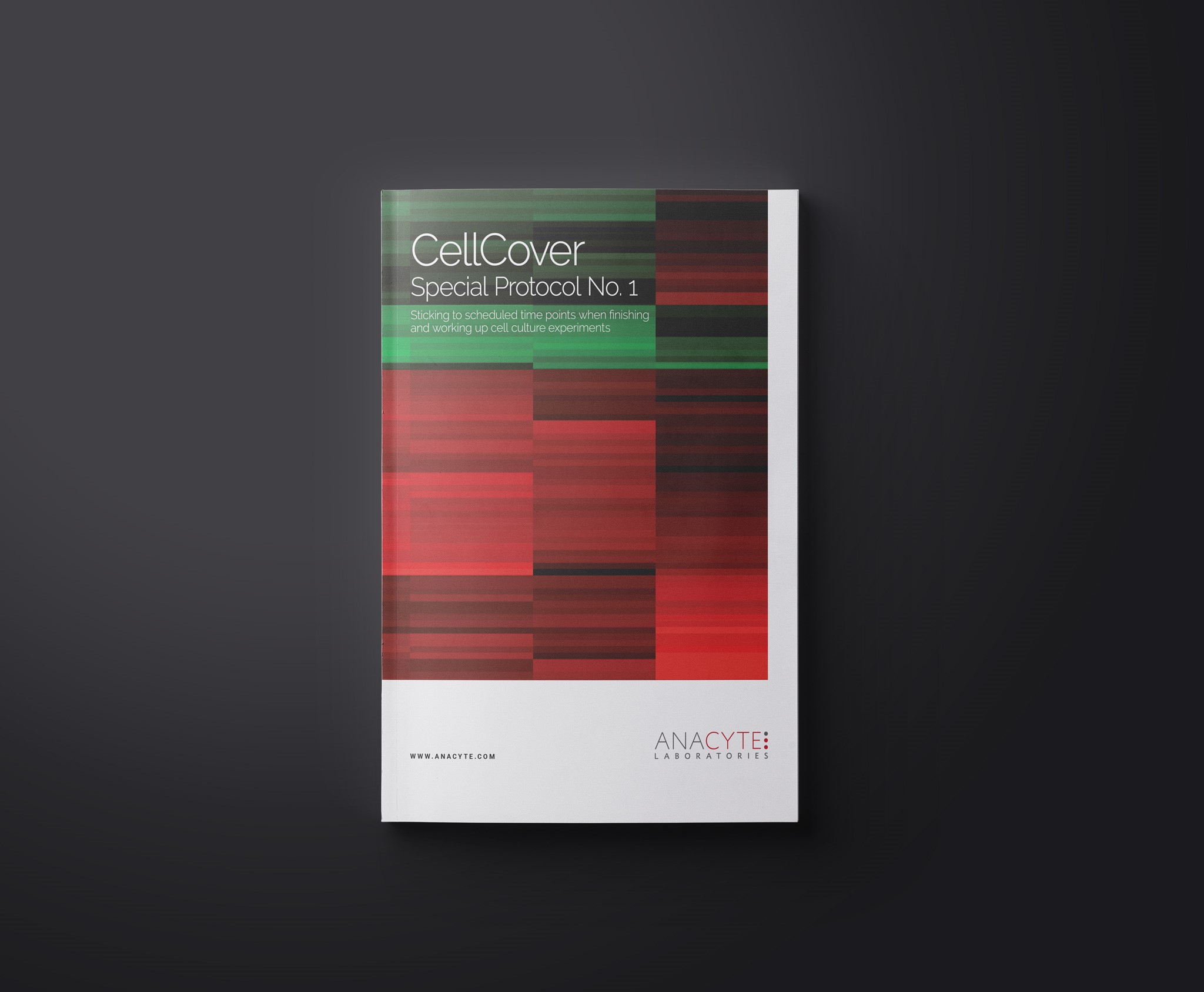
Possible downstream applications:
Application of CellCover is simple: Remove cell culture medium, apply CellCover and incubate for two minutes. Then proceed with your standard protocol.
CellCover allows for many downstream experiments by avoiding lysis of cells at the start of sample preservation with complete cell fixation. By preventing lysed cells, cell morphology is preserved, allowing for accurate visualization of molecule location.
A unique and special feature of CellCover is the ability to perform additional molecular analysis on cells that have already been analyzed on a morphological or molecular level. DNA, RNA, or proteins can be isolated for example for NGS, RNA purification, or protein expression and proteomic analysis after initial immunohistochemistry, immunocytochemistry, or flow cytometry analyses.
A non-comprehensive list of compatible techniques are listed below:
- Batch and single cell analysis
- Flow cytometry / FACS
- Immunocytochemistry
- Immunohistochemistry
- FISH
- Microarray
- NGS
- PCR
- RNA Sequencing
- Northern Blotting
- Western Blotting
- Many more applications
For a quote or any further questions concerning our product and its applications, please contact us:
